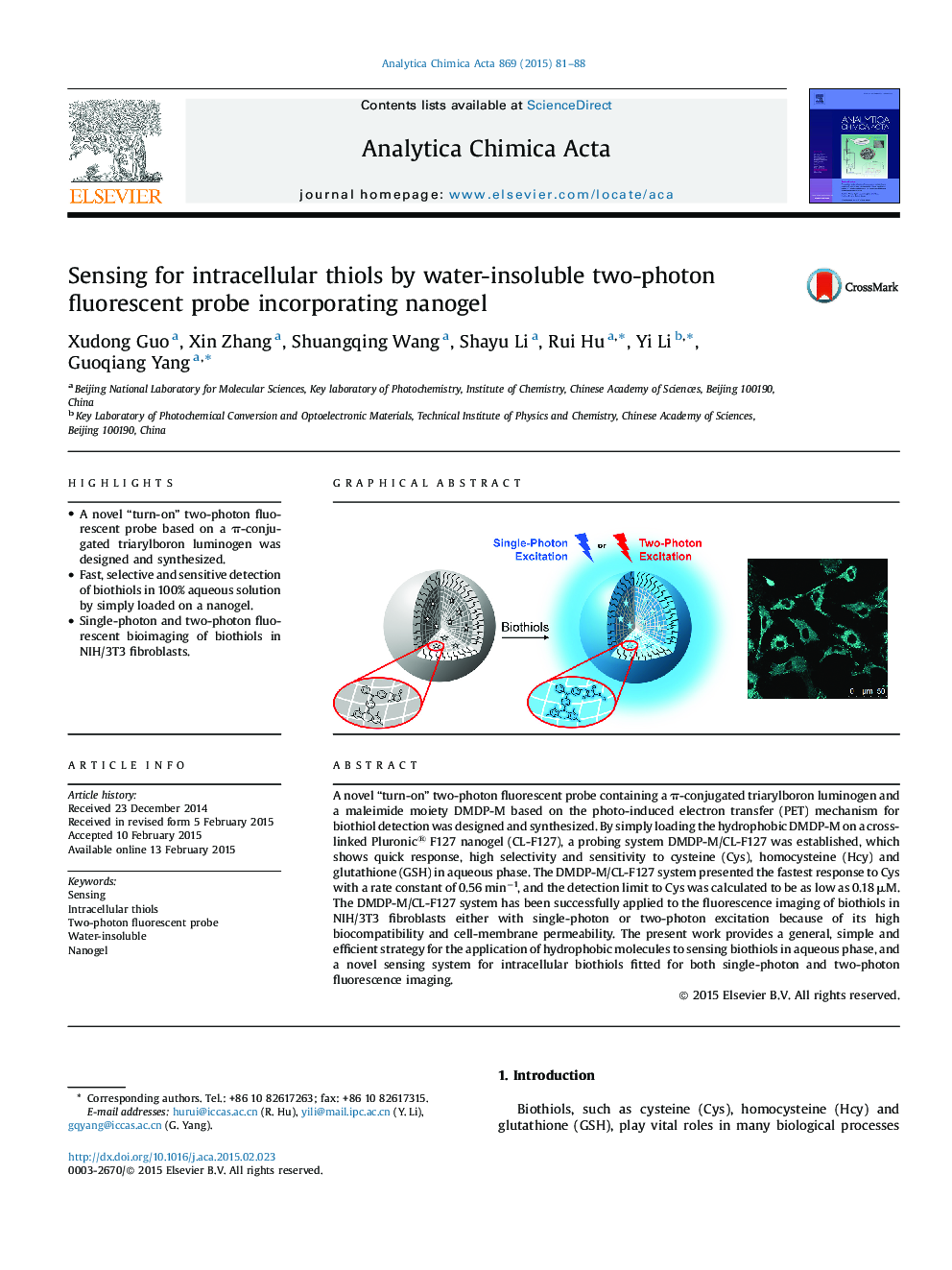| Article ID | Journal | Published Year | Pages | File Type |
|---|---|---|---|---|
| 1164043 | Analytica Chimica Acta | 2015 | 8 Pages |
•A novel “turn-on” two-photon fluorescent probe based on a π-conjugated triarylboron luminogen was designed and synthesized.•Fast, selective and sensitive detection of biothiols in 100% aqueous solution by simply loaded on a nanogel.•Single-photon and two-photon fluorescent bioimaging of biothiols in NIH/3T3 fibroblasts.
A novel “turn-on” two-photon fluorescent probe containing a π-conjugated triarylboron luminogen and a maleimide moiety DMDP-M based on the photo-induced electron transfer (PET) mechanism for biothiol detection was designed and synthesized. By simply loading the hydrophobic DMDP-M on a cross-linked Pluronic® F127 nanogel (CL-F127), a probing system DMDP-M/CL-F127 was established, which shows quick response, high selectivity and sensitivity to cysteine (Cys), homocysteine (Hcy) and glutathione (GSH) in aqueous phase. The DMDP-M/CL-F127 system presented the fastest response to Cys with a rate constant of 0.56 min−1, and the detection limit to Cys was calculated to be as low as 0.18 μM. The DMDP-M/CL-F127 system has been successfully applied to the fluorescence imaging of biothiols in NIH/3T3 fibroblasts either with single-photon or two-photon excitation because of its high biocompatibility and cell-membrane permeability. The present work provides a general, simple and efficient strategy for the application of hydrophobic molecules to sensing biothiols in aqueous phase, and a novel sensing system for intracellular biothiols fitted for both single-photon and two-photon fluorescence imaging.
Graphical abstractFigure optionsDownload full-size imageDownload as PowerPoint slide
